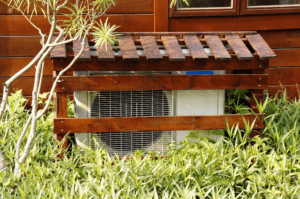 For homeowners and businesses alike, having a sustainable HVAC system has a long list of benefits. Many businesses are committed to “going green” in general, since sustainability is something that can positively affect reputation, branding, employee morale, regulatory compliance, and more. Also, a greener HVAC system is one that uses less energy, which can mean significant month-to-month savings for both home and business owners. The good news is that there are many ways to make your home or commercial heating and cooling units more efficient and sustainable. Here are a few strategies to keep in mind on your path toward a green HVAC setup:
For homeowners and businesses alike, having a sustainable HVAC system has a long list of benefits. Many businesses are committed to “going green” in general, since sustainability is something that can positively affect reputation, branding, employee morale, regulatory compliance, and more. Also, a greener HVAC system is one that uses less energy, which can mean significant month-to-month savings for both home and business owners. The good news is that there are many ways to make your home or commercial heating and cooling units more efficient and sustainable. Here are a few strategies to keep in mind on your path toward a green HVAC setup:
- Consider trading out your old system for a new one: There are steps you can take to make your building more efficient across the board, which can, in turn, affect HVAC performance. However, if you have old and inefficient HVAC equipment, you can only achieve so many games. Consult an HVAC expert and have them inspect your home or commercial heating and cooling units. If you do decide to upgrade your HVAC equipment, make sure to select heating and cooling systems that are Energy Star certified.
- Schedule a service: Similar to how regular oil changes and vehicle servicing can maximize your car’s fuel economy, routine preventative maintenance for your HVAC equipment will help keep it efficient and sustainable. You should have your units serviced about once a year, preferably ahead of the seasons where they will be doing most of their work. So, bring in an HVAC technician to maintain your air conditioning equipment in the spring and your heating equipment in the fall. Not only will these services help ensure optimal performance year-round, but it will also enable you to spot problems with your system before they turn into breakdowns.
- Keep your ducts clean: Dirty ducts decrease the air quality throughout your entire building. They also impede airflow, forcing your HVAC system to work that much harder to deliver hot or cold air to your vents. A system working overtime will expend energy that it doesn’t need, affecting sustainability and cost. Put simply; duct cleaning is an integral part of your annual HVAC upkeep process.
- Make sure your system is the right size: It’s impossible to have a truly “green” HVAC system if the system hasn’t been adequately sized to suit your home or building. An HVAC system that is too small or insufficiently powered will work way too hard to try to heat or cool an over-large space. An HVAC system that is too big, meanwhile, will switch on and off repeatedly as it seeks to achieve a consistent temperature throughout your building. Both situations waste energy and result in sub-par temperature and humidity control. Especially if you are planning to swap out your HVAC equipment for Energy Star upgrades, consult with your HVAC technician to make sure you are getting an appropriately-sized system.
- Embrace modern thermostat technology: Today’s thermostats are sophisticated and powerful, capable of controlling the temperatures in your home or business in more exact and efficient ways than ever before. Programmable thermostats make it easy to ease up on heat or air conditioning during the night or when no one is around. Smart thermostats, meanwhile, give you the ability to monitor and tweak temperatures without even being in the building. Zone control has also become increasingly popular, especially for controlling temperatures throughout disparate parts of a commercial building. Embracing these technologies can help you save energy and stay green.
- Look for building improvements that can help: The design and setup of your home or business can also affect HVAC efficiency. Is everything insulated thoroughly? Are the ducts adequately sealed? Are your windows or doors particularly drafty? Insulating your ductwork and investing in energy-efficient windows and doors can help reduce heat transfer, thereby maximizing the efficiency of your system.
- Use other factors to affect temperature: Your HVAC system is not the only component of your building that can increase or decrease the temperature. On the contrary, there are things you can do with your building and property in general that can reduce strain on the system. If your air conditioning unit is working too hard in the summer, things such as ceiling fans, curtains, blinds, and even landscaping features that provide natural shade (such as trees and hedges) can help keep your home or building cooler. In the winter, maximizing the flow of natural sunlight into each room can help keep the temperature warmer, while reversing your ceiling fans can distribute rising heat evenly.
Talk to an HVAC Expert about Keeping Your Home or Commercial Heating and Cooling Units Green
Every building is a bit different when it comes to heating and cooling. If you are committed to making your HVAC setup more sustainable, consulting with an HVAC technician to get specific tips tailored to your home or business is the best bet. From thermostat strategies to upgrades for your commercial heating and cooling units, your HVAC professional will be able to provide you with the right steps to achieve a greener setup.
